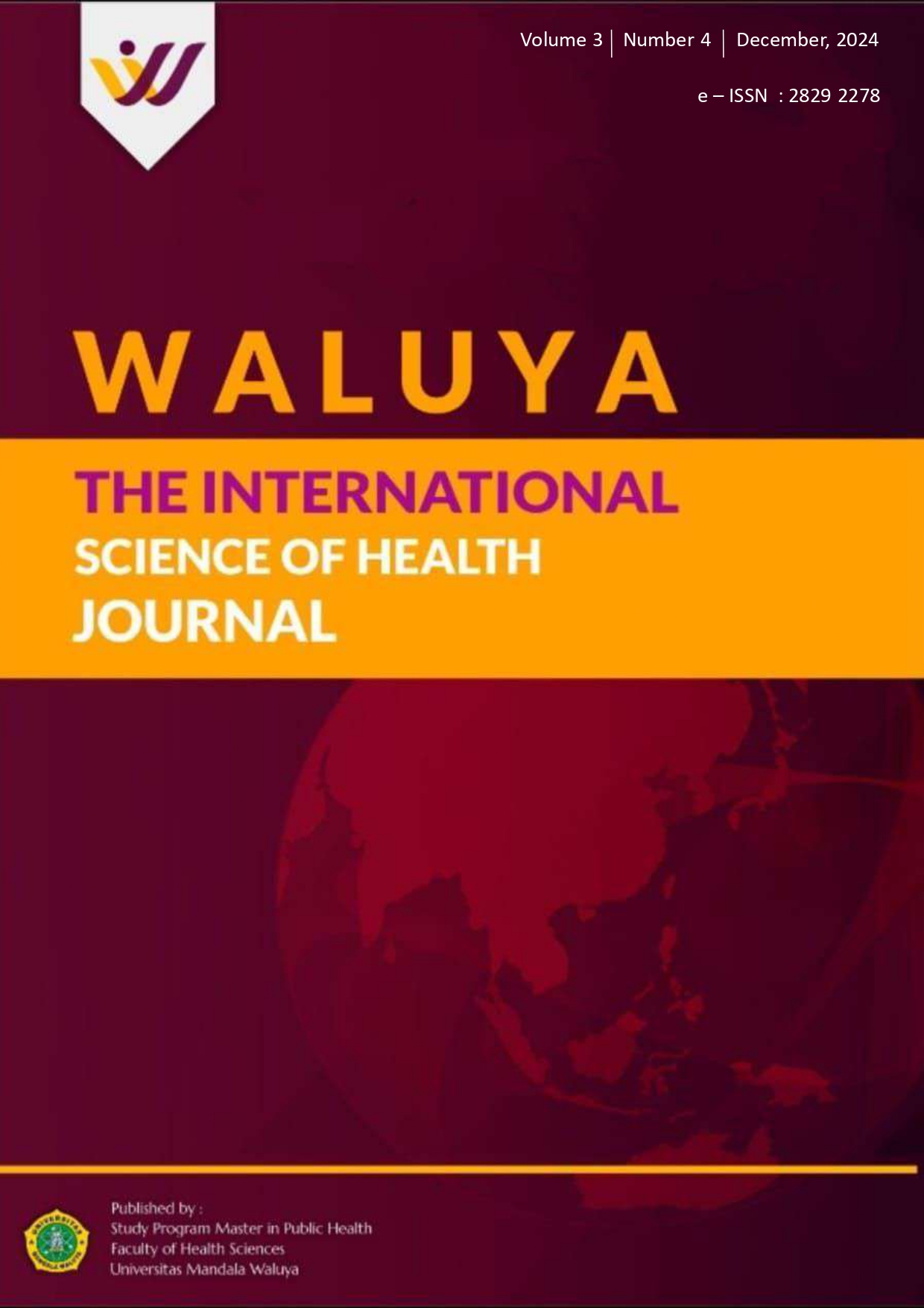Spatial Analysis of Dengue Hemorrhagic Fever in The Working Area of The Puuwatu Health Center
DOI:
https://doi.org/10.54883/wwbchq09Keywords:
Flick Free Numbers , Residential Density, Waste Management, Dengue Hemorrhagic FeverAbstract
Backgrounds:Dengue Hemorrhagic Fever (DHF) is one of the infectious diseases that has high morbidity and morality rates. Based on data obtained from the Kendari City Health Office, it is known that the prevalence of DHF in Kendari City in 2021 was 211 cases of DHF. In 2022, there were 230 cases of DHF. In 2023, the number of cases was 253 people.
Methods:This type of research isquantitative descriptive with a spatial approach.The population in the study was 8,100 respondents with a sample of 99 respondents using a sampling technique.cluster sampling. The analysis used univariate analysis, and spatial analysis and was testedusing the Chi-square test.
Results: Of the total 99 respondents, there were 7 cases of DHF, with 3 cases each in Puuwatu and Punggolaka Villages, and 1 case in Watulondo Village. Of the total 99 respondents, there were 34 respondents who did not reach the ABJ target with the most respondents from Punggolaka Village, 11 respondents. Of the 99 respondents, there were 17 respondents who did not meet the housing density requirements with the most respondents from Watulondo Village, 6 respondents. Of the 99 respondents, there were 43 respondents who had poor waste management with the most respondents from Punggolaka Village, 14 respondents.
Conclusion:The incidence of DHF in the Puuwatu Health Center working area was in Puuwatu Village as many as 3, Punggolaka Village as many as 3 and Watulondo Village as many as 1.
Downloads
Published
Issue
Section
License
Copyright (c) 2024 Waluya The International Science of Health Journal

This work is licensed under a Creative Commons Attribution 4.0 International License.







